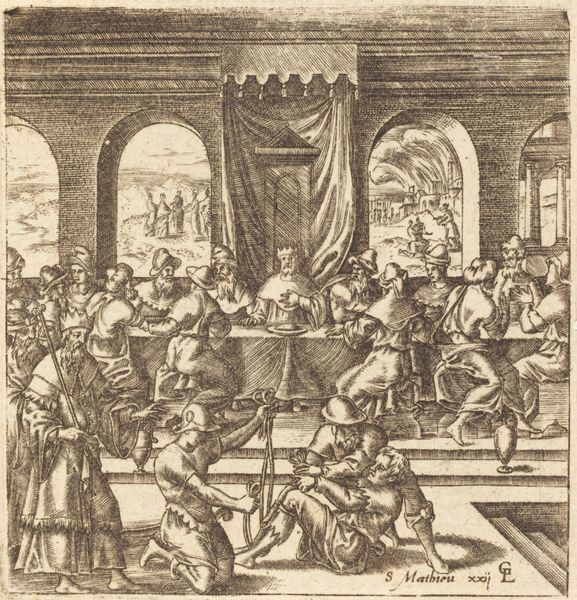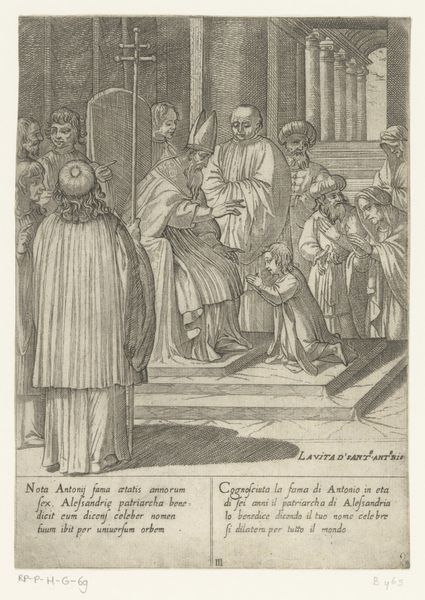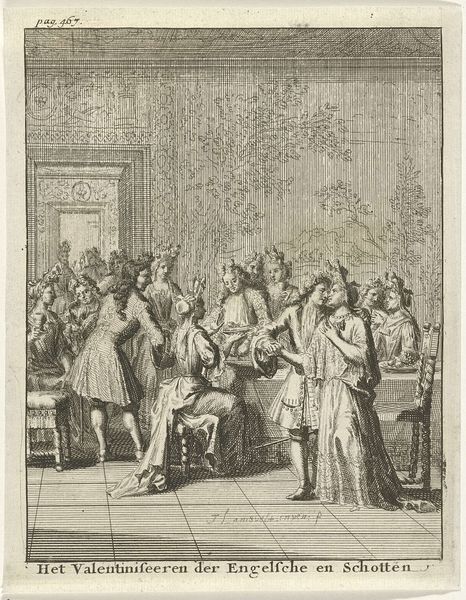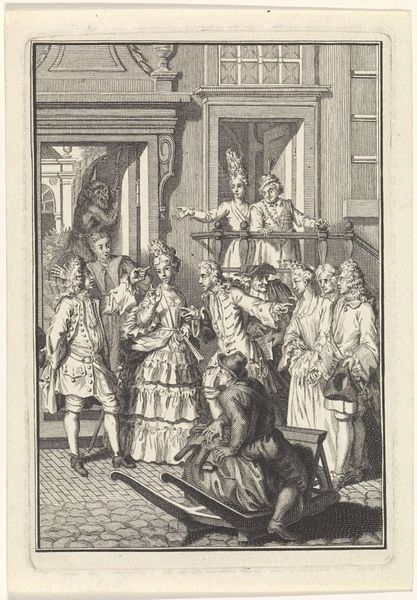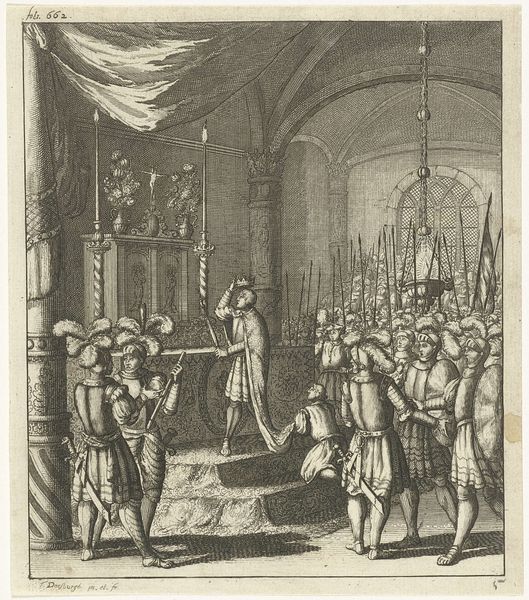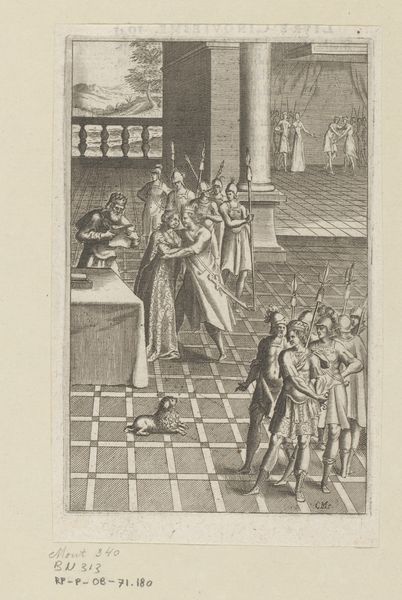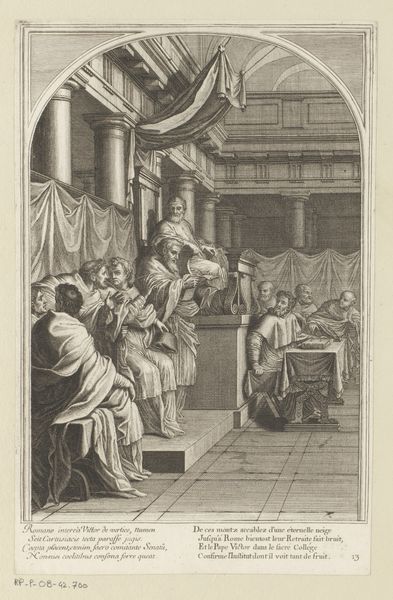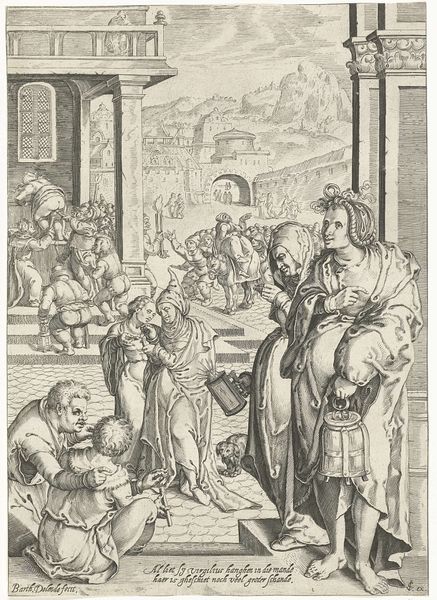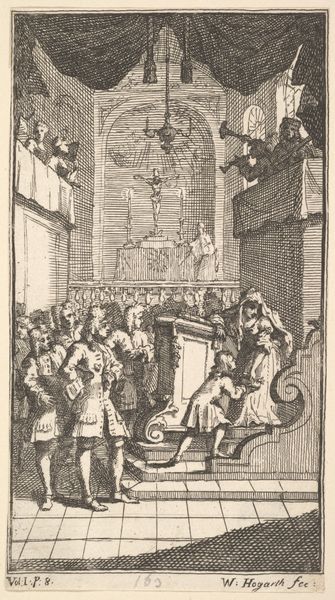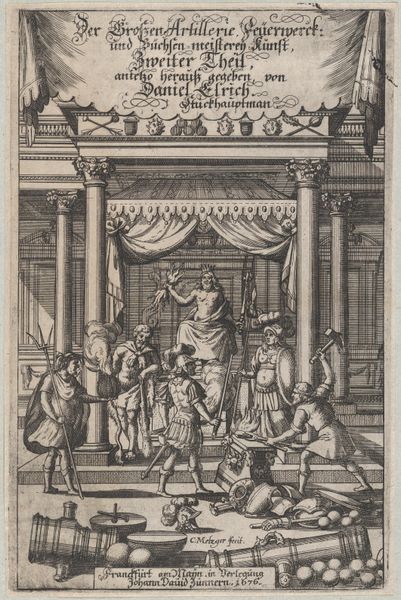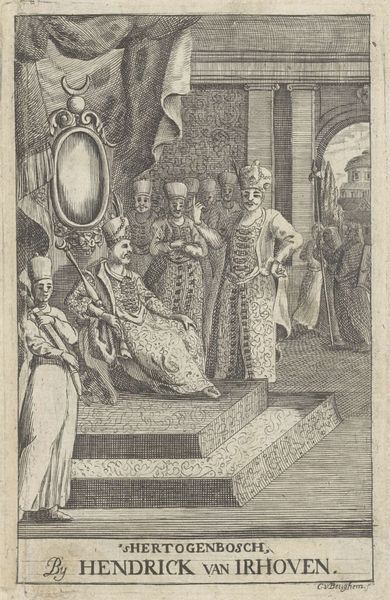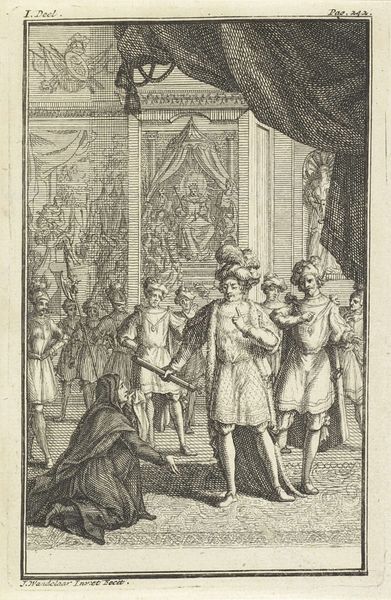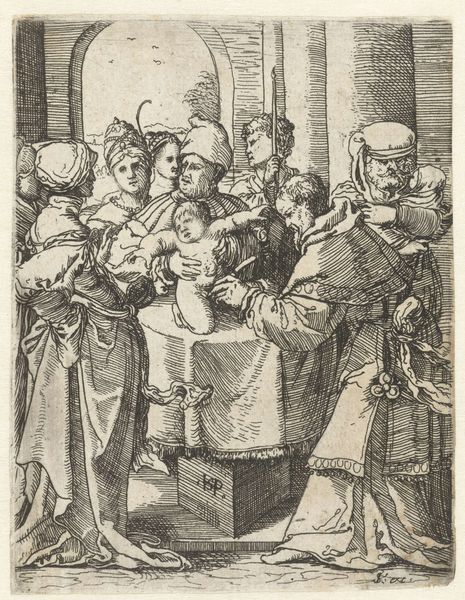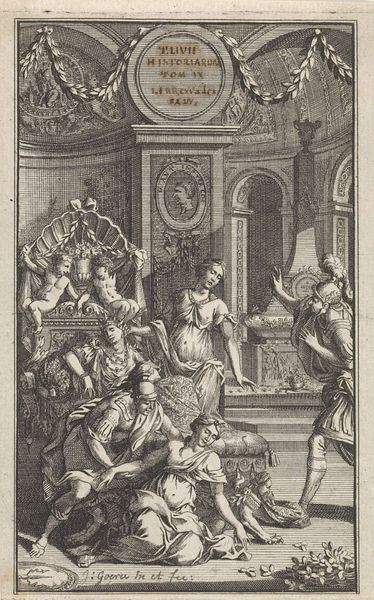
print, engraving
#
narrative-art
#
baroque
# print
#
caricature
#
caricature
#
history-painting
#
engraving
Dimensions: height 177 mm, width 138 mm
Copyright: Rijks Museum: Open Domain
Curator: Oh, what a darkly comic little drama we have here! The energy almost vibrates off this engraving. Editor: This is a 1700 print titled "Tronende vorst laat onderdaan onthoofden", or “Throned Prince Orders the Beheading of a Subject,” attributed to Jan Lamsvelt and housed right here in the Rijksmuseum. It seems a pointed bit of narrative art. Curator: Pointed indeed. There’s a strange levity to the scene. The way the executioner is poised, hammer raised, as if about to smash a stubborn nut! Is this the Dutch Baroque aesthetic? Or something more barbed? Editor: The Baroque certainly, with its dramatic flourishes, though filtered through a Dutch lens of political commentary. Look at the details. A grand palace setting, yes, but the focus is on power and its abuses. Printmaking in this era allowed for widespread dissemination of such imagery, fostering public debate about leadership and justice. Curator: The ‘prince’ looks thoroughly bored, barely glancing at the poor fellow about to lose his head! And the victim is just…there. No fight, no pleading, just resigned. Is the caricature directed towards both figures of power? Editor: Possibly, and likely to those observing these figures. Caricature served as a potent tool. Exaggerating features to ridicule the prince—his perceived cruelty—while perhaps subtly suggesting the subject’s helplessness within that system. The setting elevates the narrative, transforming it from a mere spectacle into a symbolic tableau of unchecked authority. Consider the lines, etched with intention; notice the play of light and shadow that emphasizes the coldness of the scene. Curator: It’s as though Lamsvelt invites us to examine our own relationship with authority. Does the “everyman” lose against power through sheer incompetence, apathy? Or is every man helpless against power? Either way, it’s rather hopeless, in the bleakest, funniest way. It’s dark humour that still tickles our modern ribs. Editor: The enduring resonance proves your point. These prints circulated during times of political tension, offering visual critiques of the status quo, reminding us how art actively shapes our understanding of governance. Curator: A potent piece indeed. It seems humor and political criticism are perennial bedfellows. Editor: And how historical context can unveil fresh layers in seemingly simple images. Let's move on, shall we?
Comments
No comments
Be the first to comment and join the conversation on the ultimate creative platform.
